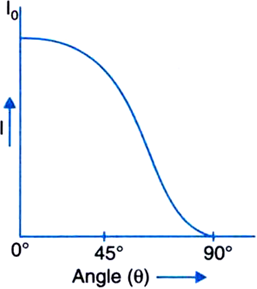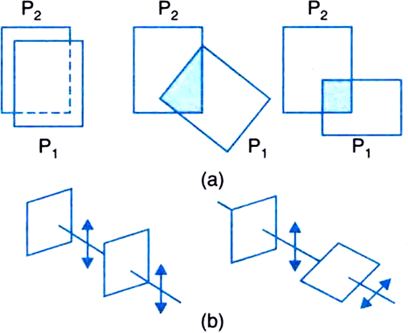(a) What is plane polarised light? Two polaroids are placed at 90° to each other and the transmitted intensity is zero. What happens when one more polaroid is placed between these two, bisecting the angle between them? How will the intensity of transmitted light vary on further rotating the third polaroid?
(b) If a light beam shows no intensity variation when transmitted through a polaroid which is rotated, does it mean that the light is unpolarized? Explain briefly.

(b) Yes, if a light beam shows no variation when transmitted through a polaroid which is rotated, this means that light is unpolarized. If an unpolarized light from an ordinary source passes through a polaroid sheet P1, it is observed that its intensity is reduced by half. Rotating P1 has no effect on the transmitted beam and transmitted intensity remains constant. Now, let an identical piece of polaroid P2 be placed before P1. The light from the lamp is reduced in intensity on passing through P2 alone. In one position, the intensity transmitted by P2 followed by is nearly zero. When turned by 90° from this position, P1transmits nearly the full intensity emerging from P2.

